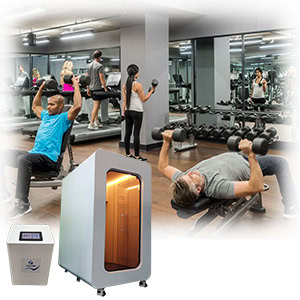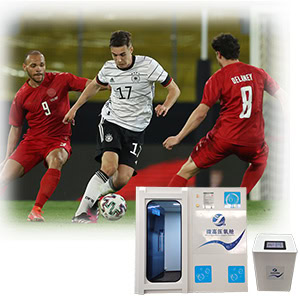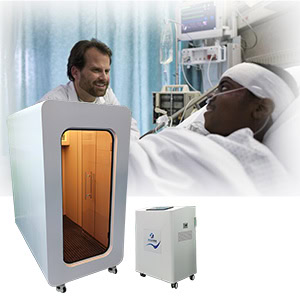How does a Decompression Chamber Work
Introduction
A decompression chamber, more commonly known as a hyperbaric oxygen chamber, is an advanced medical device designed to facilitate hyperbaric oxygen therapy (HBOT). This innovative treatment modality involves placing patients in a highly controlled environment where they are exposed to pure oxygen at pressures significantly higher than normal atmospheric levels. The concept of using pressurized oxygen for therapeutic purposes dates back to the early 20th century, but it has evolved substantially with advancements in medical technology and a deeper understanding of its benefits. Hyperbaric chambers are utilized in various medical facilities, including hospitals, outpatient clinics, and specialized treatment centers, reflecting their growing acceptance in mainstream medicine. The primary function of these chambers is to enhance the body’s natural healing processes by ensuring that an abundant supply of oxygen reaches tissues that are deprived of adequate oxygen levels due to injury or illness. This therapeutic approach has proven beneficial for a wide range of medical conditions, from acute emergencies like carbon monoxide poisoning to chronic issues such as non-healing wounds. The versatility and efficacy of hyperbaric oxygen therapy make decompression chambers indispensable tools in modern healthcare.
Increased Pressure
The principle behind hyperbaric oxygen therapy lies in the use of increased atmospheric pressure. Typically, the pressure inside a hyperbaric chamber is elevated to 1.5 to 3 times that of normal atmospheric pressure at sea level. This pressure elevation is not arbitrary; it is meticulously calibrated based on the specific medical condition being treated and the individual patient’s needs. Under these heightened pressure conditions, the patient’s lungs can absorb substantially more oxygen than they would under normal pressure. Normally, the air we breathe contains about 21% oxygen, with the remainder being mostly nitrogen. However, in the hyperbaric environment, patients breathe in 100% pure oxygen. The increased pressure helps to dissolve more oxygen into the blood plasma, significantly boosting the overall oxygen content of the blood. This physiological change is critical, especially for tissues that are struggling to get enough oxygen due to compromised blood flow or other medical issues. The process of increasing the atmospheric pressure inside the chamber is carefully monitored and controlled by trained medical personnel to ensure patient safety and comfort throughout the therapy session. The ability to manipulate atmospheric pressure in this way provides a powerful tool for enhancing the body’s capacity to heal and recover from various ailments.
Pure Oxygen
In a hyperbaric chamber, the patient breathes 100% pure oxygen, a significant increase from the 21% oxygen found in regular atmospheric air. This high concentration of oxygen is pivotal to the therapy’s effectiveness. When the body is subjected to pure oxygen in a pressurized environment, the amount of oxygen dissolved in the blood plasma increases dramatically. This process, known as hyperoxia, allows oxygen to reach areas of the body that are normally difficult to oxygenate, especially those suffering from poor circulation or injury. The increased oxygen availability supports numerous physiological processes, including the promotion of cellular repair and regeneration, enhancement of immune function, and reduction of swelling and inflammation. Breathing pure oxygen under pressure also encourages the formation of new blood vessels, a process known as angiogenesis, which can be particularly beneficial for patients with chronic wounds or tissue damage. The therapeutic use of pure oxygen is not just about flooding the body with oxygen but doing so in a manner that maximizes its distribution and effectiveness. The controlled environment of the hyperbaric chamber ensures that patients receive the optimal therapeutic dose of oxygen, tailored to their specific medical condition. This meticulous approach to oxygen delivery underscores the sophistication and efficacy of hyperbaric oxygen therapy.
Tissue Oxygenation
The primary goal of hyperbaric oxygen therapy is to achieve optimal tissue oxygenation. Under the increased pressure conditions within a hyperbaric chamber, oxygen dissolves more readily into the blood plasma. This oxygen-rich plasma then circulates throughout the body, delivering much-needed oxygen to tissues that are experiencing hypoxia, or oxygen deprivation. This enhanced oxygen delivery is critical for cellular metabolism, as oxygen is a key component in the production of adenosine triphosphate (ATP), the energy currency of the cell. By providing cells with an abundance of oxygen, HBOT accelerates cellular repair processes, supports immune function, and enhances the body’s natural healing mechanisms. This is particularly important for patients with conditions such as diabetic foot ulcers, where poor circulation impedes the normal healing process. Additionally, the increased oxygen levels help reduce edema and inflammation, which can further compromise tissue health. The therapeutic effects of improved tissue oxygenation extend beyond just healing wounds; they also include enhancing overall tissue function and resilience. By ensuring that all tissues receive an adequate supply of oxygen, HBOT helps to optimize the body’s physiological functions, supporting better health outcomes across a range of medical conditions.
Therapeutic Effects
Hyperbaric oxygen therapy offers a multitude of therapeutic benefits, addressing a wide array of medical conditions. One of the most well-known applications is the treatment of decompression sickness, a condition commonly experienced by divers who ascend too quickly and develop nitrogen bubbles in their bloodstream. The pressurized oxygen environment in the hyperbaric chamber helps dissolve these bubbles, alleviating symptoms and preventing further complications. Another critical application is the treatment of carbon monoxide poisoning. Carbon monoxide binds to hemoglobin more effectively than oxygen, reducing the blood’s oxygen-carrying capacity. Hyperbaric oxygen therapy helps displace carbon monoxide from hemoglobin, restoring normal oxygen transport and mitigating the effects of poisoning. Additionally, HBOT is effective in treating crush injuries and other traumatic wounds by reducing swelling, enhancing oxygen delivery to damaged tissues, and stimulating the growth of new blood vessels and tissues. Chronic non-healing wounds, such as diabetic ulcers, also benefit significantly from HBOT, as the increased oxygen levels promote better wound healing and reduce the risk of infection. The broad therapeutic effects of HBOT demonstrate its versatility and effectiveness in enhancing patient outcomes across various medical scenarios.
Gradual Decompression
The process of decompression is a critical phase of hyperbaric oxygen therapy. After the treatment session, the pressure within the chamber is gradually decreased to allow the patient to return safely to normal atmospheric pressure. This step, known as gradual decompression, is essential to prevent potential complications such as barotrauma to the ears and lungs, which can occur if the pressure is reduced too quickly. During decompression, patients are monitored closely to ensure their comfort and safety. The rate of decompression is carefully controlled to allow the body to adjust smoothly to the changing pressure conditions. This meticulous approach helps to avoid any adverse effects that might arise from a rapid shift in pressure. Gradual decompression is not only about patient safety; it also ensures that the therapeutic benefits of the session are maximized. By allowing the body to adjust slowly, the oxygen that has been absorbed during the session continues to be utilized effectively, supporting ongoing healing and recovery processes. The careful management of decompression underscores the precision and care involved in administering hyperbaric oxygen therapy, highlighting its status as a sophisticated and highly effective medical treatment.
Summary
The decompression chamber, or hyperbaric oxygen chamber, is a vital tool in modern medicine, offering a unique approach to enhancing tissue oxygenation and promoting healing. By utilizing increased atmospheric pressure and pure oxygen, hyperbaric oxygen therapy delivers therapeutic levels of oxygen throughout the body, addressing a wide range of medical conditions. From treating acute conditions like carbon monoxide poisoning and decompression sickness to managing chronic issues such as non-healing wounds, the benefits of HBOT are extensive and well-documented. The process of gradual decompression ensures patient safety and maximizes the therapeutic effects of the treatment. As medical research continues to explore the potential applications of hyperbaric oxygen therapy, the decompression chamber remains a cornerstone of innovative medical treatments, providing hope and healing for patients with diverse health challenges.

Chinese Hard Shell Pure Oxygen HBOT Machine for Sale
Find hard shell pure oxygen hbot machine for sale from the manufacturer in China. Our factory provides cheapest wholesale price with customized service.












